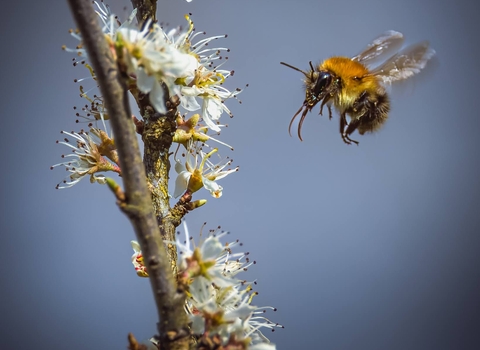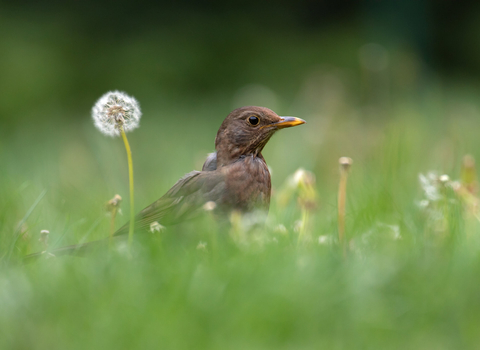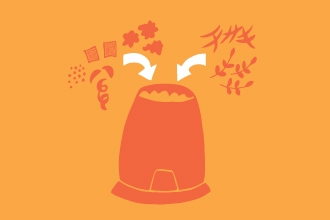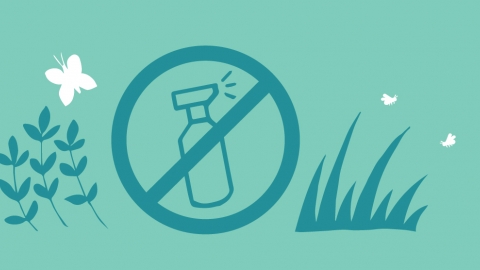
Chemical-free organic gardening
Gardening without chemicals is a good way to ensure that the food and plants you grow are free of pesticides or chemicals, thriving without the extra expense of dangerous products that are harmful to our wildlife. If you’ve used chemicals in the past, this might sound like an invitation to every insect from miles around to chomp its way through your garden. But, with time and patience, you’ll end up with a rewarding, healthier garden for ditching the chemicals.
Spraying to deal with minibeasts can often kill the animals that eat them too, or at least make them avoid your garden. When you stop using chemicals, aphids are the first creatures to return as they have a short breeding cycle. Their predators may take longer to come back, but stick with it and know it will be better in the long run!
In the end you’ll wonder why you ever needed chemicals in the first place!
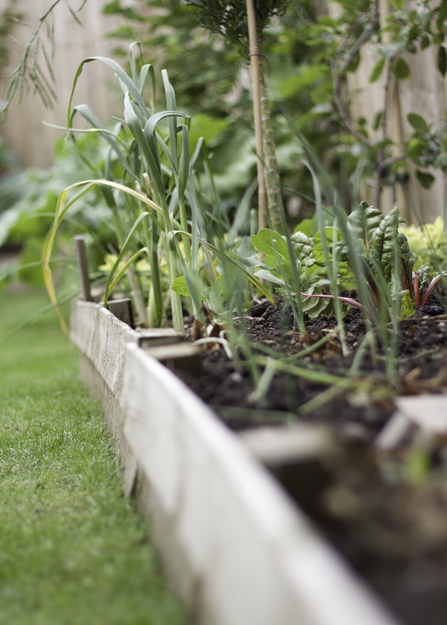
Tom Marshall
Our top tip for going chemical-free is to ensure your garden has as much variety as possible so that no one species will be able to gain control. The more complex and varied your garden is, the more resilient it becomes. In the end, you’ll wonder why you ever needed chemicals in the first place.
Browse the drop-down sections below for suggestions to help you stop slugs, insects and other animals from damaging your garden plants and vegetables.
| Problem | Solution |
|---|---|
| Aphids |
|
| Eelworms |
|
| Slugs and snails |
|
| Mealybugs |
|
| Scale insects |
|
| Vine weevil |
|
| Caterpillars |
|
Encourage natural predators
Attracting wildlife to your garden will bring in lots of natural predators that will help keep pest numbers down.
- Beetles and caterpillars are a favourite food of hedgehogs. Create a hedgehog-friendly garden with shelter, food and highways to attract them.
- Slow worms love a good slug-feast, so lay down some corrugated metal sheeting to provide a warm refuge for them to move in.
- Frogs enjoy hoovering-up aphids, so installing a small pond in your garden will help you to control the aphids, as well as providing a valuable home for amphibians.
- Ladybirds are also aphid predators. Encourage them into your garden by planting nettles. Nettles attract ladybirds earlier in the year than other plants, meaning that by the time aphids come along, you will have some resident ladybirds to take care of the problem for you!
- Social wasps are of great use around the garden as they feed their grubs almost entirely on caterpillars and other insects. By the end of the summer a nest may have consumed up to 250,000 insects. Solitary wasps also feed their young on flies, aphids and caterpillars.
- A pile of logs in a shady corner makes a good home for many of the garden's welcome guests. Frogs, toads, shrews, hedgehogs, ground beetles, centipedes and rove beetles will all use a log pile for a home and it will draw in predators such as birds. Position the log pile in an area that is shady for most of the day with cover nearby.
Companion planting
Companion planting is all about creating areas of plants that provide benefits to each other. By planting 'companion' plants among other plants it can help them to grow by either attracting beneficial insects, repelling pests, or by acting as a sacrificial plant to lure insects away.
Chives, onions and garlic are widely reported to have a repellent effect on many insects. You may decide to plant some lettuce near the edges of your vegetable patch to keep slugs on the fringes, where you can catch them before they get to the plants you want to harvest! Take a look at our page on companion planting for more ideas.
Most wildlife gardeners already know of the benefits of leaving a patch of nettles in a sunny spot for butterfly larvae to feed on. However now there is another reason, as it seems that they are a favoured food of snails. They congregate around the nettles, thus acting as decoy away from those prized vegetables and plants.
Many garden pests are attracted by scent. Planting strong-smelling plants and herbs such as tansy, marigolds, mints, catnip, onion and garlic may repel them. If they don't deter them they may encourage biological control in the form of predators such as the hoverfly whose larvae eat up to 50 aphids a day!
The marigold has several uses around the garden. It attracts the adult hoverfly. Its roots emit a substance which repels the potato root eelworm and some other types of nematode worms. Beware, the white butterfly is also partial to the marigolds, so make sure you plant them away from the cabbage patch.
Use physical barriers
Protecting your plants with horticultural fleece or mesh can prevent a range of hungry invertebrates and birds from accessing your plants. A tougher barrier like a cloche (which can be made at home by repurposing a plastic bottle) is good for protecting young seedlings in order to give them a head start.
A popular way of repelling slugs is to use crushed eggshells or coffee grounds scattered around plants. In dry conditions, this will irritate the slug. As it will naturally degrade into the soil with time you'll need to keep it topped up. Copper is also said to repel slugs, and gardeners use it in a range of forms, including coins, stripped electrical wire, or copper tape.
Planting wisely
By carefully planning your planting, you can also avoid a lot of damage. For example, by rotating the location of your plants, you may be able to avoid recurring infestations from insects that remain dormant in the soil between seasons. Another great strategy is to time your planting and harvests to work against nature's timetable. For example, sowing carrots later, or harvesting potatoes earlier, means missing the most active times for some of the hungry minibeasts they attract.

